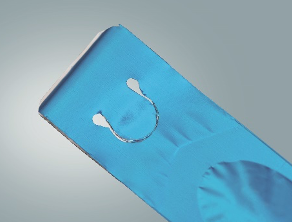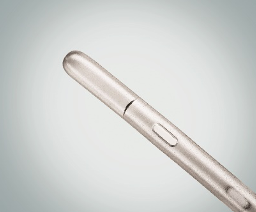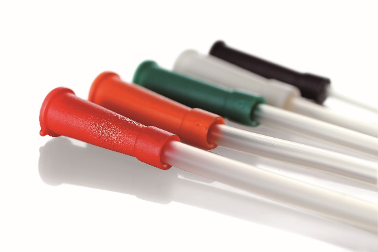Intermittent self-catheterisation (ISC) is the gold standard of care for patients with voiding complications (NICE, 2006). If indicated, and if the individual can perform ISC, the procedure has many benefits, including promoting independence and improving quality of life (Leaver, 2018).
Key to the long-term success of ISC is teaching the patient how to carry out the procedure so it is comfortable, atraumatic and clean, to minimise the risk of infection. Most importantly, the patient must be willing and able to perform the procedure, it must fit into their lifestyle and be as simple and practical as possible (RCN, 2012).
Selection of the correct catheter is an important factor to ensure ease of use and avoidance of trauma on insertion (Shaw et al, 2008). Factors such as size, lubrication, manufacturer and patient preference should all be considered (Leaver, 2018). Several different catheters may need to be tried before finding one that the patient is comfortable with. A knowledge of the catheters available is essential if clinicians are to be well placed to assist patients in finding the right solution for the individual.
Key to the long-term success of ISC is teaching the patient how to carry out the procedure so it is comfortable, atraumatic and clean, to minimise the risk of infection. Most importantly, the patient must be willing and able to perform the procedure, it must fit into their lifestyle and be as simple and practical as possible (RCN, 2012).
Selection of the correct catheter is an important factor to ensure ease of use and avoidance of trauma on insertion (Shaw et al, 2008). Factors such as size, lubrication, manufacturer and patient preference should all be considered (Leaver, 2018). Several different catheters may need to be tried before finding one that the patient is comfortable with. A knowledge of the catheters available is essential if clinicians are to be well placed to assist patients in finding the right solution for the individual.
What is Prosys® SensaCath®?
1. Aluminium foil peel-pouch

The Prosys® SensaCath® pack has been designed to be easy to open and has a large ring pull and an adhesive spot hanger, helping to free up the user’s hands for preparation and insertion of the catheter.
2. Silicone non-touch slider
The Prosys® SensaCath® range features a non-touch slider that ensures the urethra is protected from bacteria that may be present on the hands during use.
4. Pre-lubricated coating

SensaCath® has a hydrophilic coating that in combination with sterile water, is ready to use straight out of the pack. The hydrophilic coating contributes to smooth and atraumatic insertion.
4. Smooth eyelets

The SensaCath® eyelets are crafted to ensure effective drainage of urine but are crafted during manufacture to be smooth, which in conjunction with the hydrophilic coating, facilitates comfortable ISC for the user.
How will Prosys® SensaCath® benefit my patients?
In summary, the main advantages of the Prosys® SensaCath® range are:- Clean technique. This is a vital consideration in the prevention of infection. The soft connector and non-touch slider feature protect the catheter from contact with the hands, and therefore any contaminating micro-organisms, during insertion
- Ready to use. The package design and pre-lubricated hydrophilic coating make the catheter ready to use without any extra preparation
- The catheters are available in a range of colour-coded sizes and lengths to suit women and men’s different requirements
- A comfortable experience. The design of the smooth eyelets and the pre-lubricated coating contribute to the best experience during insertion for the user.
Hydrophilic-coated catheters reduce the risk of urethral trauma when compared to non-coated catheters (NICE, 2017), but hydrophilic coating can vary between catheters, affecting the degree of adherence to urethral mucosa. The Surgical Materials Testing Laboratory (SMTL) independently tested the Prosys® SensaCath® range to establish the quality and consistency of hydrophilic coating and the friction force needed to perform ISC. Results revealed that the range is consistently coated and required one of the lowest levels of force required to use the catheter when compared to other standard ISC products (SMTL, 2019).
What do patients say about using Prosys® SensaCath®?
A questionnaire was sent to a range of individuals who had been using the Prosys® SensaCath® range to carry out ISC to understand their experience (Clinisupplies, 2019). Respondents (n=76) had been using ISC for varying periods (14% for less than a week, 33% for 1–4 weeks, 21% for 1–6 months and 11% for over 6 months). Respondents also had a range of morbidities resulting in voiding problems (prostate gland, n=20; multiple sclerosis, n=4; other issues with their bladder, n=40, while 11 did not respond to this question).When patients were asked if they would continue to use the Prosys® SensaCath® range every day, 89% said they would. When asked about the specific features of SensaCath®, 93% reported that it was easy to open the packaging and 88% described the insertion as easy. When asked about any discomfort during insertion or removal, 80% said there was none with 92% saying the whole experience of using SensaCath was positive (Clinisupplies, 2019).
Individual patient comments included:
‘I thought it would be difficult, but it was very easy and I had no difficulties’.
‘Nice and soft which made me feel happier to push it in. Easy to use, good instructions, good support’.
‘A bit anxious about catheterising at first, but quickly realised how easy it was. I will carry on using’.
Educational materials for patients using Prosys® SensaCath®
There are full instructions for female patients in a comprehensive information booklet available at www.clinisupplies.co.uk/images/resources/womens-Guide-to-Self-catheterisation.pdf, and for male patients at www.clinisupplies.co.uk/images/resources/Mens-Guide-to-Self-catheterisation.pdf.Free home delivery service
Clinisupplies also offer Clinidirect; a home delivery service for medical devices. Simply order your patients’ NHS prescriptions for any urine drainage or collection products online or by phone and we will deliver direct to their door, at no extra cost to them or the NHS.To sign up, or for more information, visit www.clinidirect.co.uk or call 0800 142 2950.

References
Clinisupplies (2019) Intermittent catheter post-market surveillance product evaluation. Data on file.
Leaver R (2018) Intermittent self-catheterisation. Urology and Continence care Today 1 (1) …
NICE (2006) https://www.nice.org.uk/guidance/ng123/chapter/Recommendations#non-surgical-management-of-urinary-incontinence
NICE (2017) Infection: prevention and control of healthcare-associated infections in primary and community care. Partial Update of NICE Clinical Guideline 2. National Clinical Guideline Centre, London
RCN (2012) Catheter Care: RCN Guidance for Nurses. RCN, London
Shaw C, Logan K, Webber I, Broome L, Samuel S (2008) Effect of clean intermittent self-catheterisation on quality of life: a qualitative study. J Adv Nurs 61(6): 641–50
Surgical Material Testing Laboratory (SMTL) (2019) Test Report 19/5850/1
Leaver R (2018) Intermittent self-catheterisation. Urology and Continence care Today 1 (1) …
NICE (2006) https://www.nice.org.uk/guidance/ng123/chapter/Recommendations#non-surgical-management-of-urinary-incontinence
NICE (2017) Infection: prevention and control of healthcare-associated infections in primary and community care. Partial Update of NICE Clinical Guideline 2. National Clinical Guideline Centre, London
RCN (2012) Catheter Care: RCN Guidance for Nurses. RCN, London
Shaw C, Logan K, Webber I, Broome L, Samuel S (2008) Effect of clean intermittent self-catheterisation on quality of life: a qualitative study. J Adv Nurs 61(6): 641–50
Surgical Material Testing Laboratory (SMTL) (2019) Test Report 19/5850/1


